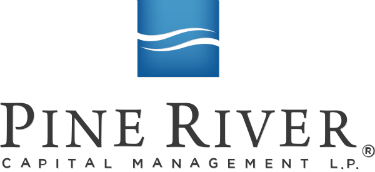Pine River Capital Management L.P.
Named after the Minnesota town it originally called home, Pine River Capital Management is a global alternative asset management firm. Since its founding, the advisory has moved to Minnetonka and opened offices in New York and London. It pursues relative value trading, seeking to exploit price or rate gaps between similar securities.
The firm is perhaps best known for cashing in on the rebound in government-backed mortgages after the financial crisis of 2008, delivering 90% returns in 2009. Its performance, however, has not been as stellar in recent years, and clients have defected, so much so that the firm had to close its flagship hedge fund in 2017. Today, the advisory manages $6.1 billion in assets (down from its 2015 peak of roughly $15 billion).
Pine River Capital Management Background
Brian Taylor founded Pine River Capital in 2002 and remains the CEO and chief investment officer. He is the majority owner through Pine River Holdings, L.P. The other partners all work for the firm.
As mentioned earlier, Pine River Capital has shrunk in recent years. It currently has 24 advisors among its 172 employees.
What Types of Clients Does Pine River Capital Management Accept?
Technically, Pine River Capital’s clients are its private funds, the private funds it established for a single investor or group of investors (sometimes through a third party) and other legal entities, including publicly listed real estate investment trusts (REITs). Investors in these funds, then, are either “non-U.S. persons,” U.S. “accredited investors” as defined by the Securities Act of 1933 or certain U.S. “qualified purchasers” or “knowledgeable employees” as defined in the Investment Company Act of 1940.
Which is all to say that people who work with Pine River Capital are either institutional clients or very wealthy and financially sophisticated investors.
Pine River Capital Management Minimum Account Sizes
Pine River Capital provides its minimum requirements in each private fund’s offering documents. According to SEC data, they range from $1 million to $5 million per fund. The firm may accept a lower amount at its discretion.
Services Offered by Pine River Capital Management
Pine River Capital provides investment management services to private funds. It also offers its investment services to two publicly listed REITs, Granite Point Mortgage Trust Inc. and Two Harbors Investment Corp (the latter through a wholly owned subsidiary, PRCM Advisers LLC).
Pine River Capital Management Investing Philosophy
The fixed-income hedge fund firm frequently uses relative value strategies, which means taking long positions in securities it thinks are undervalued and short positions in securities it thinks are overvalued. But the specific strategies it pursues depend on the fund or investor (if the fund is being created for a single investor or group).
Other strategies that Pine River Capital may use include:
- Mortgage-backed securities
- Convertible securities arbitrage
- Directional trading
- Tail hedge strategy
- Capital structure arbitrage
- Credit arbitrage
- Spread or arbitrage trading
- Event-driven strategies
- Unannounced transactions
- Hedging strategy
- Long/short equity strategies
Additionally, it should be noted that the firm does not follow any set asset allocation model, so portfolios may be concentrated in certain types of securities or issuers.
Fees Under Pine River Capital Management
Pine River Capital bases its management fees on a percentage of assets under management (AUM). Generally, the annual percentage for its master funds ranges from 0.5% to 1.75%. Additionally, the firm may collect a performance-based fee that ranges from 15% to 20% of realized and unrealized gains and losses. The firm may negotiate any fees at its discretion.
Pine River Capital Management Awards and Recognition
The last time Pine River Capital appeared on Institutional Investor’s top 100 hedge fund list was 2015, when it ranked No. 92. In 2012 and 2013, the publisher named the firm the Relative Value Hedge Fund Manager of the Year.
Also in 2012, the Pine River Fund and Pine River Fixed Income Fund were on Barron’s Top 100 Hedge Fund list.
Most recently, the Pine River China Fund won Eurekahedge’s Best New Asian Hedge Fund in 2015.
What to Watch Out For
The only Americans Pine River Capital works with are accredited investors. It also states in its Form ADV brochure that investments with it “are illiquid and should only be acquired by Investors able to commit their funds for an indefinite period.”
In other words, the firm does not work with small or inexperienced investors. It also does not provide financial planning or wealth management services. So if you are looking for a financial advisor who can help steer your personal finances, this firm is not the right fit.
Disclosures
In its most recent SEC filings, Pine River Capital reported that it had one disclosure within the past 10 years. It dates to 2010, when the firm missed a reporting deadline issued by the Securities Exchange Board of India by what the firm says was a “matter of hours.” As a result, the firm was suspended from the domestic Indian securities market from September 30, 2010 to May 2011.
Opening an Account With Pine River Capital Management
To contact Pine River Capital, call its Minnetonka headquarters at (612) 238-3300 or its New York office at (212) 364-3200. Alternately, you can send an email to investors@prcm.com.
Where Is Pine River Capital Management Located?
Pine River Capital has two offices in the U.S.:
- 601 Carlson Parkway, 7th Floor, Minnetonka, Minnesota 55305 (headquarters)
- 3 Bryant Park, 24th Floor, New York, New York 10036
All information was accurate as of the writing of this article.
Tips for Fixed-Income Investors
- Consider buying bond mutual funds or exchange-traded funds. These offer more liquidity than individual bonds, and they’re managed by professionals.
- Get expert advice. This is your money, after all. To start your search for a financial advisor, use SmartAsset’s financial advisor matching tool. Simply answer questions about your financial situation and preferences, and the program will match you with up to three suitable advisors.

